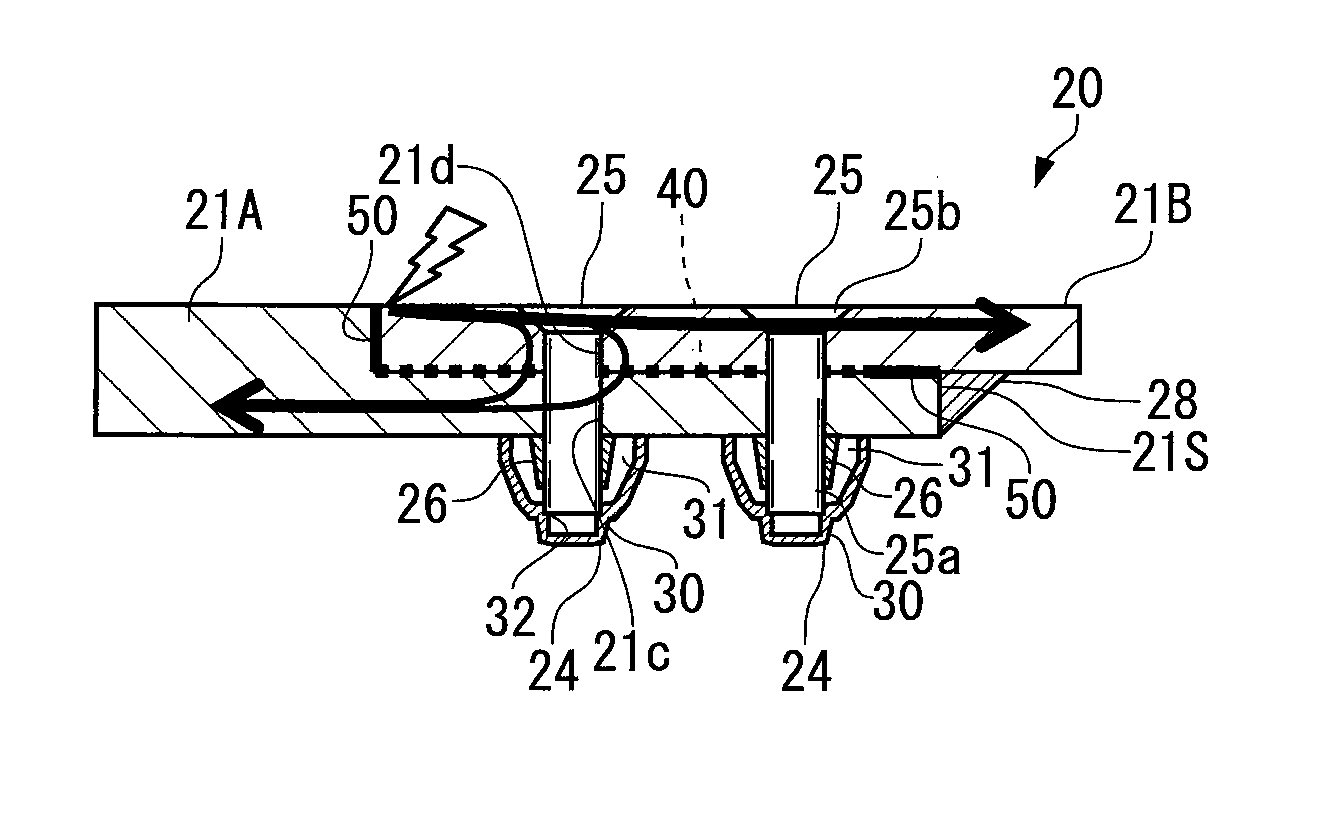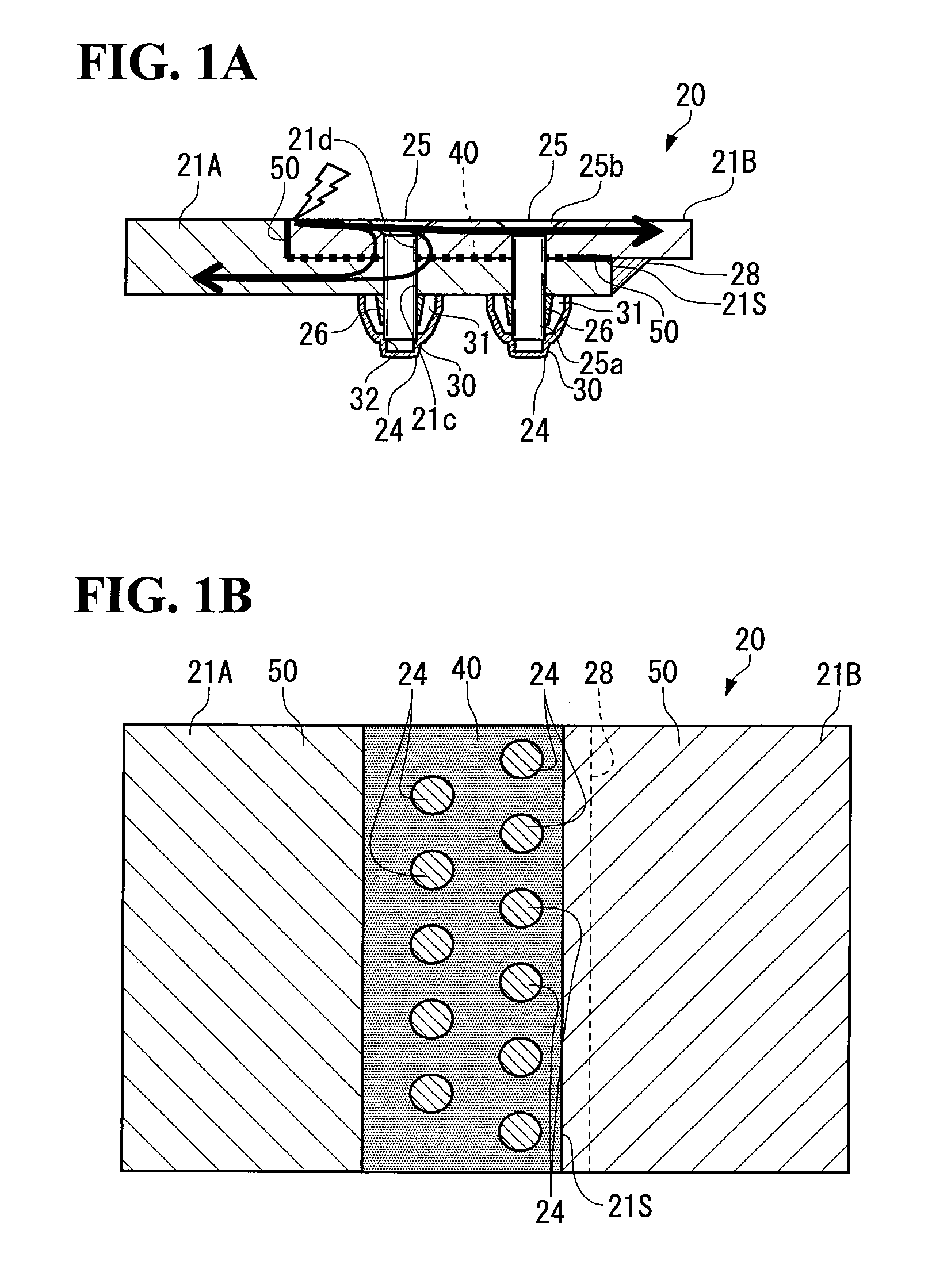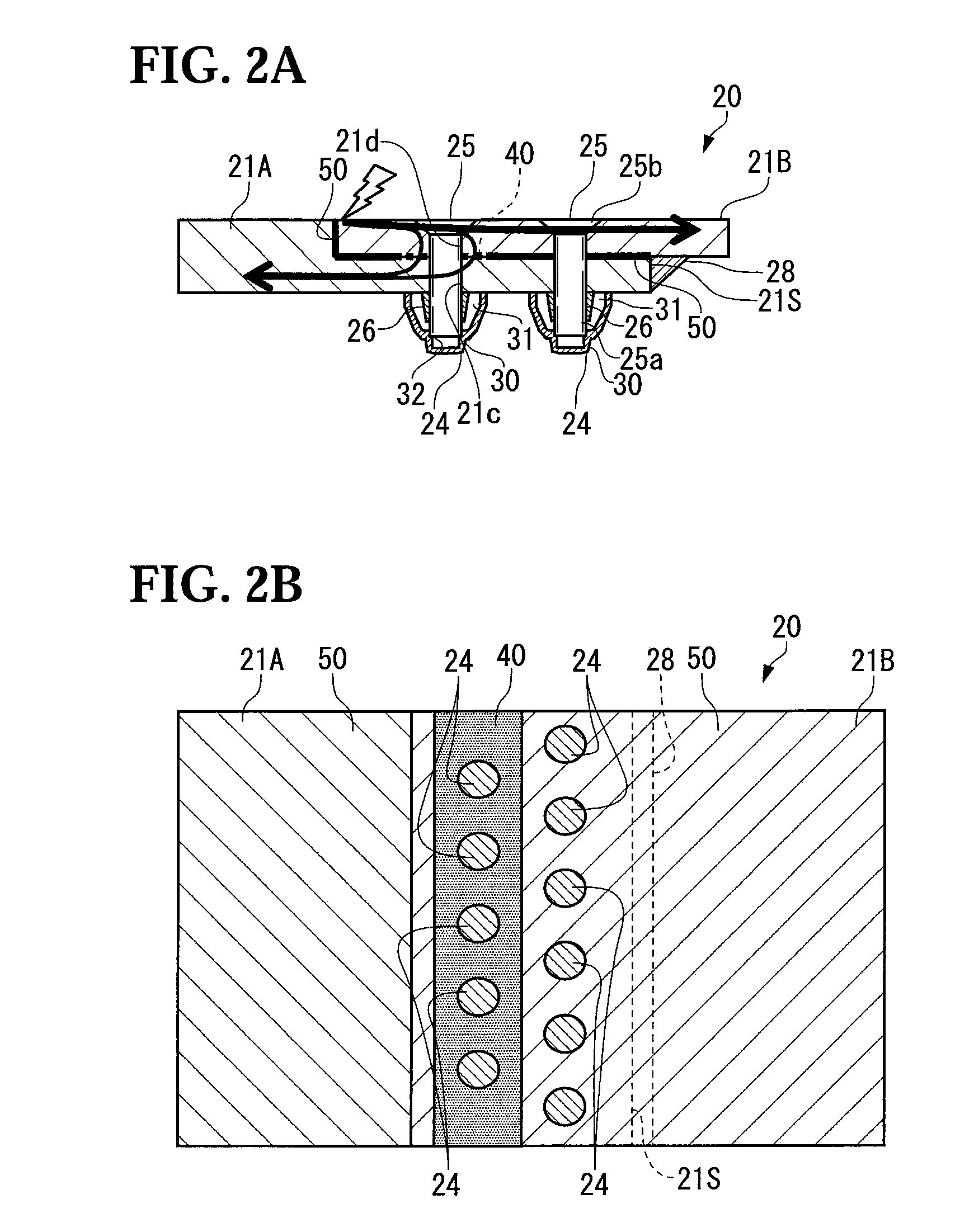Coupling structure for airframe components
a technology of airframe components and coupling structures, which is applied in the direction of aircraft static dischargers, threaded fasteners, transportation and packaging, etc., can solve the problem that the fastener member cannot reliably suppress the occurrence of electric arcs, and achieve the effect of sufficient lightning protection capability and high reliability
- Summary
- Abstract
- Description
- Claims
- Application Information
AI Technical Summary
Benefits of technology
Problems solved by technology
Method used
Image
Examples
first embodiment
[0036]FIGS. 1A and 1B are a cross-sectional view and a plan view each illustrating part of a wing constituting the airframe of an aircraft to which a coupling structure for airframe components is applied according to a first embodiment of the present invention.
[0037]As illustrated in FIG. 1A, the outer frame of a wing 20 is formed by coupling a plurality of wing surface panels (members) 21A, 21B, . . . , and the wing surface panels 21A, 21B . . . are made of, for example, metal materials such as an aluminum alloy, carbon fiber reinforced plastics (CFRP) that are composite materials of carbon fiber and resin, and glass fiber reinforced plastics (GFRP) that are composite materials of glass fiber and resin. Then, end parts of the adjacent wing surface panels 21A and 21B are placed on top of each other, and the adjacent wing surface panels 21A and 21B are coupled to each other by a plurality of fastener members 24 in the overlapped portion thereof.
[0038]Each fastener member 24 includes ...
second embodiment
[0063]In a second embodiment of the present invention, as illustrated in FIGS. 2A and 2B, the conductive pattern part 40 is formed in a continuous belt-like pattern along the outer shape of the wing surface panel 21B, only in a region corresponding to the fastener members 24 that are arranged in a line far from the boundary portion between the end part 21S of the wing surface panel 21A and the wing surface panel 21B, in the overlapped portion of the wing surface panels 21A and 21B.
[0064]With this configuration, the lightning current L flowing along the surface of the wing surface panel 21B at the time of a lightning strike can flow into the wing surface panel 21A through the conductive pattern part 40 formed in the region corresponding to the fastener members 24 that are arranged in the line far from the boundary portion between the end part 21S of the wing surface panel 21A and the wing surface panel 21B.
[0065]The primer layer 50 as the insulating area is formed in a belt-like patt...
third embodiment
[0068]In a third embodiment of the present invention, as illustrated in FIGS. 3A and 3B, the conductive pattern part 40 is formed only around each of the fastener members 24 that are arranged in a line far from the boundary portion between the end part 21S of the wing surface panel 21A and the wing surface panel 21B, of all the fastener members 24 that are arranged in the plurality of lines along the boundary portion between the end part 21S of the wing surface panel 21A and the wing surface panel 21B, in the overlapped portion of the wing surface panels 21A and 21B. The conductive pattern part 40 is not formed around each of the fastener members 24 arranged in the other lines, and the primer layer 50 is formed in outer peripheral parts thereof. The conductive pattern part 40 is formed, for example, in a ring-shaped pattern around each of the holes 21c and 21d on the plane on which the wing surface panel 21A and the wing surface panel 21B abut against each other.
[0069]With this conf...
PUM
 Login to View More
Login to View More Abstract
Description
Claims
Application Information
 Login to View More
Login to View More - R&D
- Intellectual Property
- Life Sciences
- Materials
- Tech Scout
- Unparalleled Data Quality
- Higher Quality Content
- 60% Fewer Hallucinations
Browse by: Latest US Patents, China's latest patents, Technical Efficacy Thesaurus, Application Domain, Technology Topic, Popular Technical Reports.
© 2025 PatSnap. All rights reserved.Legal|Privacy policy|Modern Slavery Act Transparency Statement|Sitemap|About US| Contact US: help@patsnap.com



